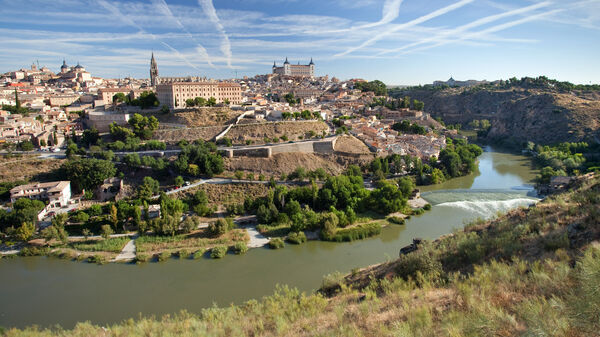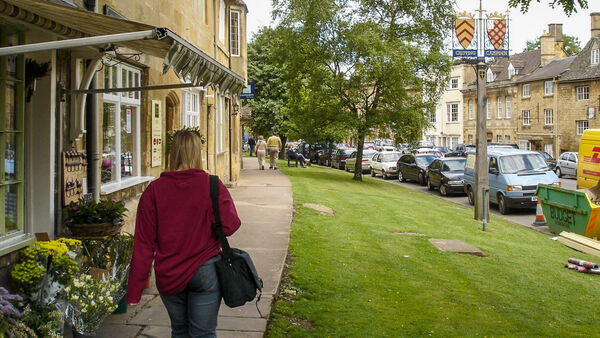Europe’s Best-Preserved Towns
By Rick Steves
Every once in a while as you travel, you stumble onto a town that somehow missed the 21st-century bus. Ironically, many of these wonderfully preserved towns are so full of Old World charm because, for various reasons, their Old World economies failed. The towns became so poor that no one even bothered to tear them down to build more modern towns. England's Cotswolds lost their export market. Bruges' harbor silted up. Stranded-in-the-past Dutch fishing towns were left high and dry as the sea around them was drained and the land reclaimed. Toledo, strangled by a bend in a river chosen to protect it, lost its position as Spain's capital city.
Today, many of these towns enjoy a renewed prosperity as "tourist dreams come true." Others slumber on, quietly keeping their secrets. When the Old World is not performing on big-city stages, it huddles in the pubs and gossips in the markets of Europe's villages. Here are a few of my favorites.
Toledo, Spain
Spain's historic, artistic, and spiritual capital is so well-preserved that the entire city is protected as a national monument. Toledo is filled with tourists day-tripping from Madrid, 90 minutes to the north. Miss the bus and spend the night! While Toledo's Parador Nacional Conde de Orgaz is one of Spain's most famous luxury hotels, I'd enjoy its grand city view over coffee without suffering through its stuffy management and clientele overnight. Instead, sleep in a 17th-century cardinal's palace built right into the old town wall, the Hacienda del Cardenal.
After dark, Toledo is much more medieval — almost haunted in some corners. Explore its back streets and marvel at the great cathedral with a sacristy full of El Greco masterpieces. Munch on obleas, communion wafer-like cookies the size of paper plates. End your day with a feast of roast suckling pig somewhere in the dark tangle of nighttime Toledo.
Collioure, France
The small resorts of the French Riviera line the beach like prostitutes on bar stools, waiting for tourists in search of a good time. But Collioure, just before the Spanish border, aims its charms at its own people and a few savvy passersby. And while most of France's Mediterranean coast is condo city, the stretch around Collioure is more like a camping village. The town's earth-tone buildings, dotted with pops of Crayola color on the shady squares, are bathed in the region's famously evocative light — no doubt a product of its mix of sea and mountain air. A range of beaches lie within a few minutes' walk of the old town. With all this under a once-mighty castle and the peaks of the Pyrenees, painters and local families feel no need to struggle with the Cannes-fusion that grabs the typical Riviera-bound visitor.
Collioure comes with a splash of Spain. In a district called Catalane, the town flies a flag that looks just like Barcelona's over its tiny bullring and greets you with its own accent. In some ways Collioure has turned its cobbled back on France. But the ambience of Collioure is what was so charming about the Côte d'Azur back before the introduction of the paid vacation turned the Riviera into France's holiday beach. Collioure is within two hours by car or train from Avignon, Carcassonne, and Barcelona. And by car, you're an hour's climb to Peyrepertuse, the most breathtaking castle ruin of the many that dot the Pyrenees.
Bruges, Belgium
Bruges (pronounced broozh in French), or Brugge (BROO-guh, in Flemish), is Belgium's medieval wonderland. Bruges has enough art to make a big city proud. Let a local guide show you the town's treasures: fun modern art, an impressive collection of Flemish paintings, a leaning tower, and the only finished Michelangelo statue in Northern Europe. Formerly a textiles trading center riding high on the prosperity of the Northern Renaissance, Bruges' harbor silted up, the shipping was lost, and the city was forgotten until rediscovered by modern-day tourists. Once again, Bruges thrives. And Bruggians are connoisseurs of good living — specifically fine chocolate. You'll be tempted by chocolate-filled display windows all over town.
Hindeloopen, Netherlands
The Netherlands will tempt you with splashy tourist towns communities of clichés where women with the ruddiest cheeks are paid to stand on doorsteps wearing wooden shoes, a lace apron, and a smile. A local boy peels eels, there's enough cheese to make another moon, and some kid somewhere is posing with his finger in a dike. These towns (such as tour-bus-friendly Volendam, Monnickendam, and Marken) are designed to be fun, and they are. But make an effort to find a purely Dutch town that is true to itself, not to tourism. Rent a bike and enjoy exploring this tiny, flat country with your own wheels. In the Netherlands, you can rent a bike at one train station and leave it at nearly any other. My favorite village is little Hindeloopen (near Sneek). Silent behind its dike, it's hard-core Holland, right out of a Vermeer painting. The towns of Haarlem, Delft, and Edam are pleasant small-town bases for easy day-tripping into sometimes seedy Amsterdam.
Moreton-in-Marsh and Staithes, England
Britain loves quaintness. Every year she holds most-beautiful-town contests, and from Land's End to John O'Groats cobbles are scrubbed, flowers are planted, and hedges shaved. With such spirit, it's not surprising that England is freckled with more small-town cuteness than any country in Europe. Ye olde pubs and markets, combined with townspeople who happily eat, breathe, and sleep their history, make any rural part of England a fine setting to enjoy tea and scones or a pint of beer.
While you're likely to find a small, prize-winning town just about anywhere in England, the Cotswold hills (northwest of Oxford) and the southeast coast tuck away some of the best. Both regions were once rich, but shifting seas and industrial low tides left them high and dry. Today, their chief export is coziness with a British accent.
The Cotswolds' Chipping Campden and Stow-on-the-Wold are quaint without being overrun, and both have good accommodations. Stow has a bit more character for an overnight stay, and offers the widest range of choices. Four miles from Stow, the work-a-day town of Moreton-in-Marsh has the nearest train station. With a car, consider really getting away from it all by staying in one of the smaller villages. Like marshmallows in hot chocolate, Stanway, Stanton, and Snowshill nestle side by side, awaiting your arrival.
England's southeast coast of Kent and Sussex has five former ports, the "Cinque Ports," that now harbor tourists for a living. Rye, usually included as one of the Cinque Ports, is commonly overrated as England's most photogenic village. Rye's most famous pub is the Mermaid Inn, rebuilt in 1420 (!) after the original burnt down.
England's quaintest port of all is farther north, on the coast beyond York. Staithes, Captain Cook's boyhood town, just north of Whitby near the York Moors, is a salty tumble of ancient buildings bunny-hopping down a ravine to a cramped little harbor.
A Few More
Europe has become a scavenger hunt for tourists, and most of the prizes have been found. But there are many towns that time forgot and tourists neglect. Passau in Germany, Hall in Austria's Tirol, Rouen in France, Sighișoara in Romania, and Erice in Sicily are just a few. Even with tourist crowds, which are now a standard feature in the summer months, the tiny well-pickled towns of Europe give the traveler the best Old World preserves.



